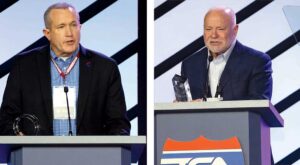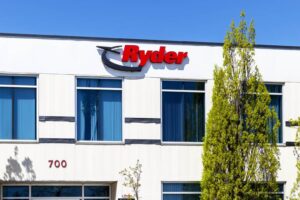The crescendo has passed, but the symphony of protest against electronic logging devices (ELDs) is far from over. Despite the objections and barring a legislative turnaround of epic proportions, ELDs are here to stay.
Whether the claims of enhanced safety provided by ELDs prove true, and so far they have not, carriers have a vital interest in protection against the “nuclear” verdicts being handed down in courtrooms. With paper logs, they had less control over the driver’s actions. Hours of Service infractions and falsifications that could potentially seal a verdict against the carrier might not be discovered until weeks afterward, when the logs were sent in. And, if the driver was good enough at “creative” logging, those infractions might not be discovered at all.
Full disclosure: during a driving career, the writer may or may not be responsible for years of near-perfect duty status records that may or may not have been routinely (and beautifully) falsified.
For most drivers, and especially owner-operators, it was important to “preserve” as many driving hours as possible in order to be productive (and profitable). So, two hours stuck in traffic went down as a half-hour driving and an hour-and-a-half break at the truck stop, or, the start time was simply adjusted to show beginning the trip much later. Recorded driving hours were calculated by dividing miles traveled by a reasonable “average” speed, usually five or so miles below the posted speed limit — but only when the result was fewer hours than actually spent driving that distance. Daily hours didn’t start until the truck was nearly loaded, foregoing the short drive from the truck stop and hours of waiting.
ELDs have greatly reduced infractions and falsifications, and made it easier for
carriers to identify those that still occur much sooner. Some will say that ELDs can still be falsified, but it’s also easier for both carriers and law enforcement to monitor.
What has happened is that ELDs have brought to the surface something that drivers have known for decades — industry abuse of the driver’s working time has been rampant and mostly ignored. It’s amazing how many carriers suddenly became concerned about driver “productivity” when ELDs made it more difficult for drivers to “hide” non-productive hours. Dispatchers are no longer able to give wink-and-nod direction to “just do the best you can,” trusting
the driver to make the paper logs look right.
With ELDs in place, drivers and owner-operators need to find other ways to remain productive. That action might include becoming much more assertive when it comes to control of those available hours.
Refusing dispatch, for example, is a legal descriptor of being an independent owner or contractor. Drivers should consider more than just miles and compensation rates when a load is offered. For example, loads traveling shorter distances are often less productive, especially when there’s a pickup and a delivery on the same day. The rate per mile offered should be greater than for longer loads.
Potential traffic should be considered, too. A pickup scheduled for 8 a.m. in the center of a large metropolitan area virtually guarantees waiting in traffic congestion, whereas a pickup in a suburb, or in a smaller city, might get the driver in and out much faster.
Customers who routinely take excessive amounts of time to load or unload can and should be avoided. Even if the customer or carrier pays for detention time, the amount is often far less than the driver earns during hours spent driving down the highway.
In a world where compensation is usually calculated by the mile, drivers are often unaware of how their settlements equate to hourly pay. They shouldn’t be. Owners should keep a record of the total time spent on a load as well as compensation received. A load with 10 hours of driving that is loaded in an hour and unloaded in an hour means 12 hours invested. Make it four hours to load and four more to unload, and the time investment becomes 20 hours. Divide the revenue received by the time spent (12 hours or 20) and the resulting earnings per hour may differ greatly. The answer may be good to know the next time that load is offered.
Managing a trucking business, even a one-truck outfit, is often a series of trade-offs. Owners must sometimes accept a not-so-good load to get in position for a better one or to get to needed maintenance (or a visit home). Even so, every load offered should be examined for its productivity potential.
The impact of ELDs on productivity is real. Owners of small trucking businesses can minimize that impact by considering potential productivity on every load offered and by exercising the power of NO when necessary.
Cliff Abbott is an experienced commercial vehicle driver and owner-operator who still holds a CDL in his home state of Alabama. In nearly 40 years in trucking, he’s been an instructor and trainer and has managed safety and recruiting operations for several carriers. Having never lost his love of the road, Cliff has written a book and hundreds of songs and has been writing for The Trucker for more than a decade.







